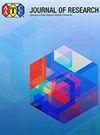A Novel Click-Through Rate Prediction Model Based on Deep Feature Fusion Network
IF 1.2
4区 工程技术
Q4 MATERIALS SCIENCE, TEXTILES
引用次数: 0
Abstract
Existing click-through rate prediction models employ both a shallow model and a deep neural model for better feature interaction. The former shallow model aims to extract explainable explicit features and the latter deep neural model aims to learn efficient implicit features. Deep neural network is a commonly used deep neural model, which can yield better performance with more neural layers. However, increasing the number of neural layers would lead to problems such as gradient vanishing, gradient explosion, and excessive parameters. In addition, the performance of a deep neural network will also decrease rapidly when it becomes too deep. In this article, we propose a novel click-through rate prediction model by improving the deep neural model part to alleviate the above problems of deep neural network-based models. This article proposes to utilize a dense deep neural network model to strengthen feature propagation, which takes the outputs of all previous layers as the input of the current layer, instead of only one previous layer being used in the deep neural network. In addition, we also utilize an advanced shallow model FmFM for better explicit features in this article, and explicit and implicit features are interacted in our model. Experiments on two data sets (Criteo and Avazu) show that the proposed click-through rate prediction model significantly outperforms existing classical models such as DeepFM, xDeepFM, and DeepLight models.一种新的基于深度特征融合网络的点击率预测模型
现有的点击率预测模型采用浅层模型和深层神经模型来实现更好的特征交互。前者的浅层神经模型旨在提取可解释的显式特征,后者的深层神经模型旨在学习有效的隐式特征。深度神经网络是一种常用的深度神经模型,神经层数越多,性能越好。然而,增加神经层数会导致梯度消失、梯度爆炸和参数过多等问题。此外,当深度过大时,深度神经网络的性能也会迅速下降。本文通过对深度神经网络模型部分的改进,提出了一种新的点击率预测模型,以缓解基于深度神经网络的模型存在的上述问题。本文提出利用密集深度神经网络模型加强特征传播,将之前所有层的输出作为当前层的输入,而不是在深度神经网络中只使用之前的一层。此外,在本文中,我们还利用了一种先进的浅模型FmFM来获得更好的显式特征,并且在我们的模型中显式和隐式特征是相互作用的。在两个数据集(Criteo和Avazu)上的实验表明,所提出的点击率预测模型显著优于现有的经典模型,如DeepFM、xDeepFM和deelight模型。
本文章由计算机程序翻译,如有差异,请以英文原文为准。
求助全文
约1分钟内获得全文
求助全文
来源期刊

AATCC Journal of Research
MATERIALS SCIENCE, TEXTILES-
CiteScore
1.30
自引率
0.00%
发文量
34
期刊介绍:
AATCC Journal of Research. This textile research journal has a broad scope: from advanced materials, fibers, and textile and polymer chemistry, to color science, apparel design, and sustainability.
Now indexed by Science Citation Index Extended (SCIE) and discoverable in the Clarivate Analytics Web of Science Core Collection! The Journal’s impact factor is available in Journal Citation Reports.
 求助内容:
求助内容: 应助结果提醒方式:
应助结果提醒方式:


